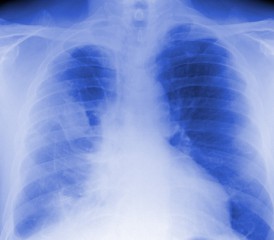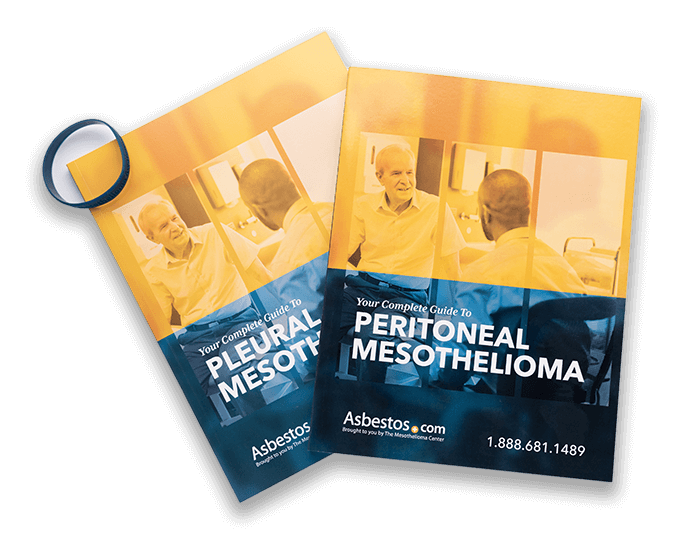Mesothelioma Patients Under Age 40 Display Unique Traits
Research & Clinical TrialsWritten by Tim Povtak • Edited By Walter Pacheco
Asbestos.com is the nation’s most trusted mesothelioma resource
The Mesothelioma Center at Asbestos.com has provided patients and their loved ones the most updated and reliable information on mesothelioma and asbestos exposure since 2006.
Our team of Patient Advocates includes a medical doctor, a registered nurse, health services administrators, veterans, VA-accredited Claims Agents, an oncology patient navigator and hospice care expert. Their combined expertise means we help any mesothelioma patient or loved one through every step of their cancer journey.
More than 30 contributors, including mesothelioma doctors, survivors, health care professionals and other experts, have peer-reviewed our website and written unique research-driven articles to ensure you get the highest-quality medical and health information.
About The Mesothelioma Center at Asbestos.com
- Assisting mesothelioma patients and their loved ones since 2006.
- Helps more than 50% of mesothelioma patients diagnosed annually in the U.S.
- A+ rating from the Better Business Bureau.
- 5-star reviewed mesothelioma and support organization.
Testimonials
My family has only the highest compliment for the assistance and support that we received from The Mesothelioma Center. This is a staff of compassionate and knowledgeable individuals who respect what your family is experiencing and who go the extra mile to make an unfortunate diagnosis less stressful. Information and assistance were provided by The Mesothelioma Center at no cost to our family.LashawnMesothelioma patient’s daughter
How to Cite Asbestos.com’s Article
APA
Povtak, T. (2020, October 16). Mesothelioma Patients Under Age 40 Display Unique Traits. Asbestos.com. Retrieved April 19, 2024, from https://www.asbestos.com/news/2015/08/17/young-patients-with-mesothelioma/
MLA
Povtak, Tim. "Mesothelioma Patients Under Age 40 Display Unique Traits." Asbestos.com, 16 Oct 2020, https://www.asbestos.com/news/2015/08/17/young-patients-with-mesothelioma/.
Chicago
Povtak, Tim. "Mesothelioma Patients Under Age 40 Display Unique Traits." Asbestos.com. Last modified October 16, 2020. https://www.asbestos.com/news/2015/08/17/young-patients-with-mesothelioma/.

Researchers from the National Institutes of Health (NIH) have uncovered some distinct differences in mesothelioma among a unique subset of patients under the age of 40, providing insight that could lead to a better understanding of this complex disease.
Malignant mesothelioma is typically diagnosed in older patients who were exposed to asbestos decades ago in an occupational setting, but researchers recently isolated a smaller, much younger group and found some startling trends.
These people survived much longer, were more likely to be female, and more likely to have peritoneal mesothelioma. The findings were in stark contrast to the typical mesothelioma patient.
“We were surprised, really surprised at some of the things we found,” NIH Medical Oncology Branch researcher Vinay Prasad, M.D., told Asbestos.com. “You have to look at this group in a different light.”
The research team used the Surveillance, Epidemiology and End Results (SEER) Program database from 1999 to 2010. SEER is a National Cancer Institute program.
The study, published in Oncotarget in June, included 12,345 mesothelioma patients. Two percent of those were under the age of 40 when first diagnosed.
The Numbers
“These differences may tell you that the biology of the cancer is different. It’s different possibly on a molecular level, and maybe it should be treated differently,” Prasad said. “We need investigators to roll up their sleeves and really study it with trials aimed at this specific group.”
Here are the findings of the study:
Patients under age 40:
- Male: 51 percent
- Female: 49 percent
- Diagnosed with pleural mesothelioma: 47 percent
- Diagnosed with peritoneal mesothelioma: 48 percent
- Median survival: 34 months
- Five-year survival: 38 percent
Patients older than age 40:
- Male: 78 percent
- Female: 22 percent
- Diagnosed with pleural mesothelioma: 90 percent
- Diagnosed with peritoneal mesothelioma: 9 percent
- Median survival: 8 months
- Five-year survival: 3 percent
Is There a Genetic Predisposition?
Prasad believes the analysis of people under age 40 points to a genetic predisposition to the disease and another cause unrelated to asbestos exposure.
The typical latency period between exposure to asbestos and diagnosis of mesothelioma can range from 25-50 years.
“Over 40, it’s definitely an asbestos-driven disease,” he said. “I don’t think it’s the same for the under-40 group. The high percentage of peritoneal disease in the younger group really stands out.”
Pleural mesothelioma starts in the thin lining surrounding the lungs. It stems from prolonged inhalation of microscopic asbestos fibers which get trapped in the lining. That process scars the tissue and damages DNA, leading to the development of cancerous cells. Peritoneal starts in the lining around the abdominal area.
Learning from Younger Patients
Some medical professionals believe that a small yet significant percentage of mesothelioma cases can stem from non-asbestos mineral fibers and excessive radiation exposure.
Several studies in recent years have pointed to a genetic mutation of the protein BAP1 that makes some people predisposed to mesothelioma.
“Considering its long latency period, mesothelioma in the young is less likely to be due to occupational exposure to asbestos fibers,” the research authors wrote in the study.
The ethnicity percentages changed significantly between the two age groups. Blacks accounted for 10 percent of the mesothelioma patients under 40, but only 5 percent of those in the over 40 group.
Patients under age 40 also were more likely to have surgery than older ones, which could help explain the longer survival. In those people, 38 percent had major surgery. While 32 percent of patients between ages 40 and 64 reported having major surgery in the past.
A total of 18 percent of those age 65 and older reported major surgery.
“This subgroup indeed has distinctive clinical characteristics,” the authors wrote. “Genetic susceptibility alone cannot explain it in the young. Further studies are needed to understand the interplay between genetic susceptibility and mineral fiber carcinogenesis.”







